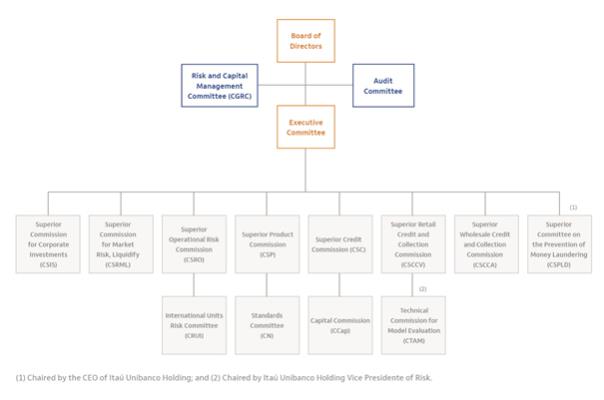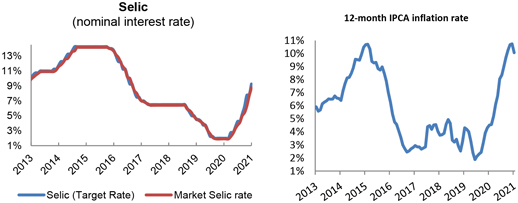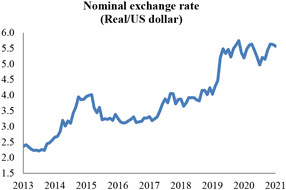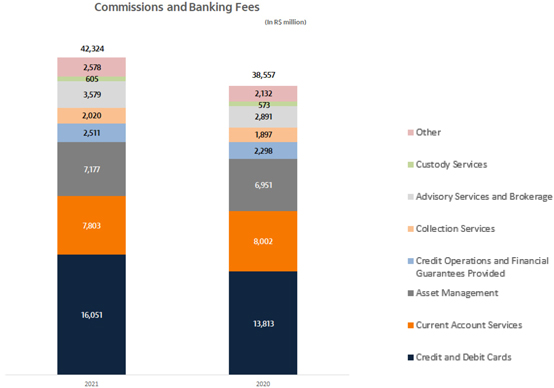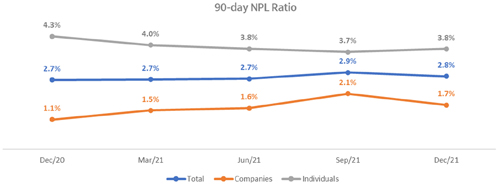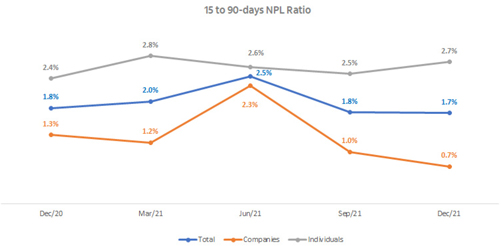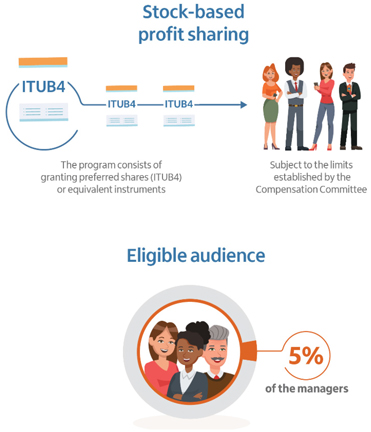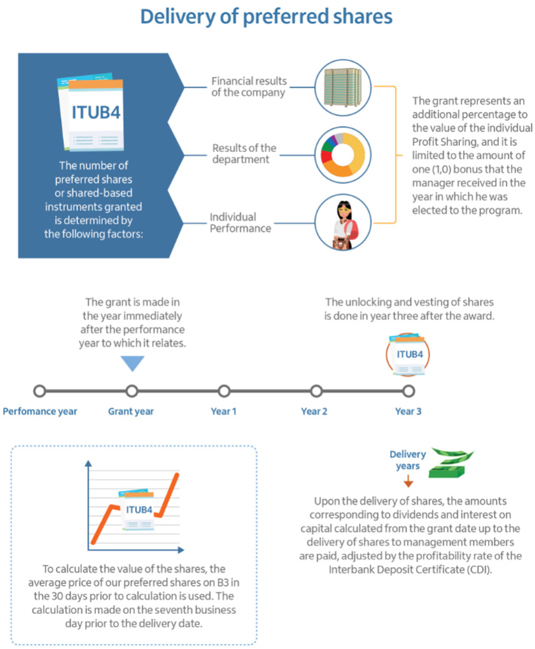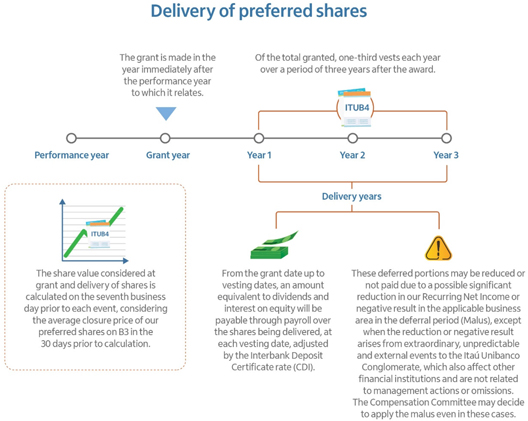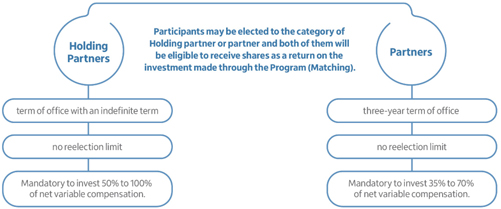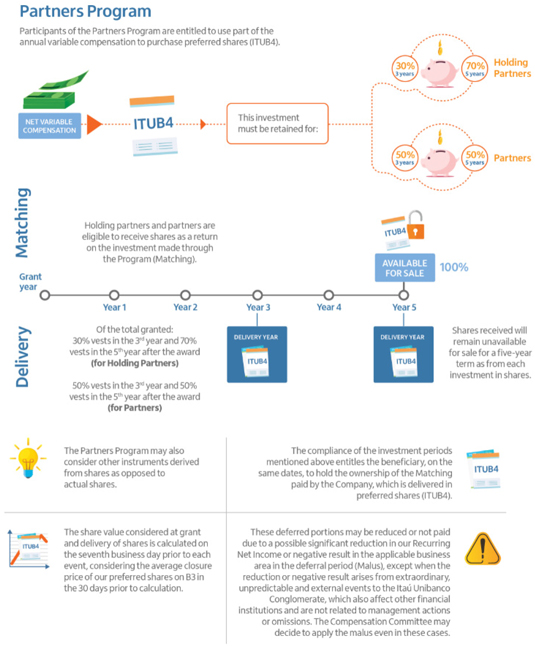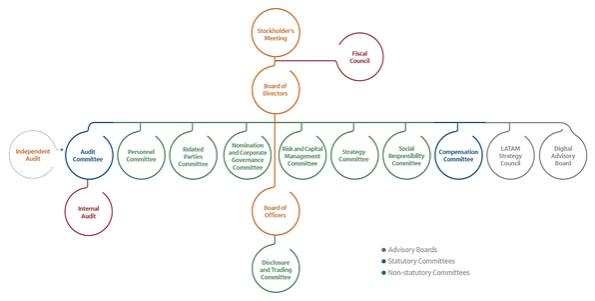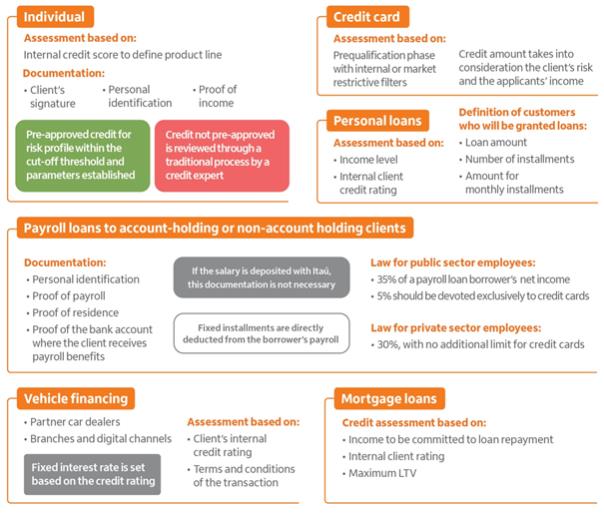In 2008, we closed the largest merger in Brazil´s history. The partnership between Itaú and Unibanco meant the union of complementary mentalities, two ground-breaking banks in the use of technology and leaders of the sector in Brazil, which shared histories. This merger resulted in the largest private financial conglomerate in the Southern hemisphere and one of the 20 largest banks in the world as measured by assets.
Over the course of more than 90 years, we have traced our firm path with ceaseless commitment to the fostering of social transformation. Its history is marked by incentive of culture, education, sports and urban mobility driven through the programs of the
and
which comprises of three companies:
and
. The concern we have always shown for social causes of importance to society became even more evident in the difficult context of the greatest health crisis in recent history brought about by the
COVID-19
pandemic. Faced with this challenge, we went far beyond our immediate business responsibilities and created the program
(Everyone for Health) based on the largest philanthropic donation ever made by a private-sector entity in Brazil.
The resources donated through the Itaú Foundation for Education and Culture (
) are managed by a group of specialists from the health sector under the leadership of Paulo Chapchap which operates through actions aimed at informing and guiding the population, purchasing protective equipment, establishing preventative actions, purchasing equipment for hospitals and for testing the population, providing support for the construction of shelters (
), and supporting research into the epidemiology and treatment of
COVID-19.
We believe that a financial institution should help people and companies to achieve their dreams and invest in big ideas. A bank encourages people to grow and companies to move forward. This is how we guide our business. The responsibility we assume for the development of the countries in which we operate is at the core of our activity and is a hallmark of our entire history.
On April 12, 2022, we entered into an agreement with TOTVS S.A. (“TOTVS”) for the incorporation of a joint venture (“JV”), initially named TOTVS TECHFIN S.A. (“TECHFIN”), with the purpose of distributing and expanding financial services integrated into TOTVS’s management systems, based on intensive data use, focused on corporate clients and their entire supply chain, clients and employees.
According to this agreement, before closing the transaction, TOTVS will transfer the assets of its current TECHFIN operation to the company of which Itaú Unibanco will be a partner with 50% of capital stock, and each partner will be entitled to nominate half of the members of its Board of Directors and Board of Officers.
Itaú Unibanco will pay R$610 million to TOTVS for its stake and up to R$450 million as earn-out after five years, subject to the achievement of the targets aligned with the growth and performance goals.
Additionally, Itaú Unibanco has committed to contributing to funding current and future operations, providing credit expertise and development of new products at TECHFIN.
This partnership sets up a company that will combine technology and financial solutions, adding to the supplementary expertise of the partners to provide corporate clients with, in an expeditious and integrated manner, the best experiences in buying products directly from the platforms already offered by TOTVS.
The abilities of Itaú Unibanco and TOTVS together will also enable the new company to take advantage of opportunities in a customized and contextualized manner, anticipating clients’ needs and fully aligned with the Open Finance strategy and evolution to companies. Furthermore, this partnership strengthens the leading position of Itaú Unibanco and TOTVS in digital transformation and evolution of the financial industry.
The completion of this operation is subject to the approvals from CADE (the Brazilian antitrust authority) and the Central Bank of Brazil.
On January 12, 2022, we entered into an Agreement for the Investment, Purchase and Sale of Shares and Other Covenants with José Carlos Benfati, Vinicius Gonçalves Dalessandro, Gregorio Lara dos Santos Matai, Leandro Bolsoni, Lucas Namo Cury, among others (“Sellers”), for the acquisition of the controlling interest in Ideal Holding Financeira S.A. and, indirectly, its wholly-owned subsidiary, Ideal Corretora de Títulos e Valores Mobiliários S.A. (“Ideal”).
This purchase will be carried out in two phases over five years. In the first phase, we will purchase 50.1% of Ideal’s voting capital, by means of a primary capital contribution and a secondary acquisition of shares totaling approximately R$650 million, and as result becoming the controlling shareholder of Ideal. In the second phase, after five years on, we will be able to exercise the right to buy the remaining share (49.9%) of Ideal’s capital stock.
This transaction strengthens our investment ecosystem and will enable us (i) the provision of
the talent and expertise of Ideal’s professionals, known for their ability to innovate, (ii) the offer financial products and services (“broker as a service”) under a B2B2C model through a white label platform, (iii) the potential expeditious entry into independent investment agents market, and (iv) to improve distribution of investment products to individual clients. The management and running of Ideal’s business will remain independent from us. Against this backdrop, Ideal will continue to provide services to its clients and we will not be its exclusive service provider.
The completion of the transaction is subject to regulatory approvals, including approvals from CADE and the Central Bank of Brazil.
On October 31, 2019, we entered into a Share Purchase Agreement with ZUP LLC, Bruno Cesar Pierobon, Gustavo Henrique Cunha Debs, Felipe Liguabue Almeida and Flavio Henrique Zago, among others, for the acquisition of 100% of the voting share capital of Zup I.T. Serviços em Tecnologia e Inovação Ltda (“Zup”) for R$575 million, subject to any contractual adjustments to the purchase price.
This acquisition will be implemented in three tranches over four years. In the first tranche, which closed on March 31, 2020, we acquired 52.96% of the total voting share capital of Zup for approximately R$293 million and resulted in us controlling Zup. On the third anniversary of the closing date, we will acquire an additional 19.6% of Zup’s stake, and on the fourth anniversary, we will acquire the remaining shareholding, leading to us holding 100% of the voting share capital by 2024.
This acquisition is linked to our digital transformation process. ZUP is a benchmark company in digital transformation, which has boosted the development of our IT systems. The operation and management of business affairs of Zup will continue to be entirely independent and self-governing in relation to us, preserving its current principles and values.
On May 11, 2017, we entered into a Share Purchase Agreement with XP Controle Participações S.A., G.A. Brasil IV Fundo de Investimento em Participações, and Dyna III Fundo de Investimento em Participações, among others, as sellers, to acquire 49.9% of the capital stock (corresponding to 30.06% of the common shares) of XP Investimentos S.A., a holding company that consolidates all the investments of the XP group, including XP Investimentos Corretora de Câmbio, Títulos e Valores Mobiliários S.A. In the first tranche, we contributed to a capital increase of R$600 million and acquired of XP Investimentos S.A.’s shares from the Sellers for R$5.7 billion, provided that such amounts are subject to contractual adjustments. The value attributed to 100% of the total capital stock of XP Investimentos S.A. (before the first tranche) was approximately R$12 billion.
In August 2018, we closed the First Tranche and, together with some of the Sellers, entered into a shareholders’ agreement which contained, among others, provisions with respect to our rights as a minority shareholder, including our right to appoint two out of the seven members of the Board of Directors of XP Investimentos S.A.
On November 29, 2019, there was a corporate reorganization of XP Investimentos S.A., in which the shareholders of XP Investimentos S.A., including us, exchanged their shares of XP Investimentos S.A., incorporated in Brazil, for Class A common shares and Class B common shares of XP Inc., incorporated in the Cayman Islands, remaining with the percentages in the capital stock. Each Class A common share entitles its holder to one vote and each Class B common share entitles its holder to ten votes in all shareholders’ resolutions of XP Inc. As a result of the contribution mentioned above, XP Inc. issued to us 792,861,320 Class A common shares and 223,595,962 Class B common shares, which represent 49.9% of the total capital of XP Inc. and 30.06% of its voting rights. XP Inc. became the sole shareholder of XP Investimentos S.A., owning 100% of its total and voting capital.
Subsequently, on November 30, 2019, XP Inc. carried out a reverse stock split of one share for each four shares and, as a result, the number of shares held by us was adjusted to 198,215,329 Class A common shares and 55,898,991 Class B common shares.
In December 2019, XP Inc., a company in which we held 49.9% of capital stock, completed its initial primary offer (IPO) and listing on Nasdaq. We did not sell XP Inc. shares in such offer and immediately after the completion of the IPO, we held 46.05% of XP Inc.’s capital stock.
Additionally, on November 29, 2019, the stockholders of XP Inc. entered into a shareholder agreement substantially similar to the then existing shareholder agreement of XP Investimentos S.A. XP Inc. has a board of directors composed of 13 members, of which XP Controle Participações S.A. appointed 7 members, we appointed 2 members, the General Atlantic (XP) Bermuda, LP (successor to GA Brasil IV Fundo de lnvestimento em Participações) appointed 1 member, and the 3 remaining members are independent directors.These independent directors are also members of the audit committee of XP Inc., which was composed of 3 members appointed as follows: we appointed 2 members, and XP Controle Participações SA appointed 1 member of the audit committee.
On November 26, 2020, we announced that our Board of Directors approved the partial
spin-off
of the investment in XP Inc. for a new company (XPart S.A.).
In December 2020 XP Inc. held a
follow-on
on Nasdaq, whereby we sold approximately 4.51% of XP Inc.’s capital. In that same offering, XP Inc. issued new shares, resulting in the dilution of our stake to 41% of its share capital.
At the Extraordinary Stockholders’ Meeting held on January 31, 2021, the corporate reorganization was approved by our shareholders in order to segregate the business line related to our interest in XP Inc’s capital to a new company named XPart S.A. (“XPart”), constituted by a part of the investment owned by us at XP Inc. and cash in the amount worth R$10 million.
With the segregation of the business line represented by our investment in XP Inc. into XPart our stockholders became entitled to an equity interest in XPart in the same number, type and proportion of the shares they hold in us as per the Material Fact we published on December 31, 2020. Accordingly, the main benefit of this transaction was value creation for our stockholders, providing higher liquidity and a potential increase in the market value of their investment.
The completion of this transaction was subject to regulatory approval to be obtained by our controlling shareholders. On May 28, 2021, the favorable approval of the Federal Reserve Board (“FED”) was obtained, effective as of May 31, 2021, the date from which the legal and accounting segregation of us and XPart materialized.
XP Inc.’s capital stock held by XPart was 40.52%, totaling R$9,371, as of December 31, 2020.
On July 27, 2021, after the receipt of the approval of the operation by the Central Bank, XPart had its articles of association registered with the JUCESP (São Paulo state’s Board of Trade).
XP Inc. expressed its interest in merging XPart with and into XP Inc., ceasing to exist. Accordingly, XP Inc. and Itaúsa announced to the market on May 28, 2021, that they have reached a final understanding regarding the merger to be voted on the General Stockholders’ Meetings of XPart and XP Inc. As of May 28, 2021, shares issued by us and our American Depositary Receipts (ADRs), have been trading with right to receive securities issued by XPart.
XPart had its articles of association registered with the JUCESP (São Paulo state’s Board of Trade), and on August 20, 2021, XP Inc. and XPart announced that their General Stockholders’ Meetings to vote on the merger of XPart into XP Inc. were called to be held on October 1, 2021.
The merger of XPart with and into XP Inc. was approved by XPart’s stockholders and XP’s stockholders, at their respective Merger Shareholders’ Meetings held on October 1, 2021, and, for that reason, shares issued by us and our American Depositary Receipts – ADRs, which were being traded with the right to receive securities issued by XPart up to the closing of the trading session of October 1, 2021, entitled (a) XPart´s controlling stockholders IUPAR – Itaú Unibanco Participações S.A. and Itaúsa S.A., and the holders of our ADRs, to receive Class A shares issued by XP Inc, and (b) the remaining XPart’s stockholders to receive Level I sponsored Brazilian Depositary Receipts (BDRs) backed by Class A shares issued by XP Inc. As for our ADRs, The Bank of New York, our depositary bank suspended the issuance and cancellation of our ADRs from the closing of the trading session of September 28, 2021 to the opening of the trading session of October 6, 2021, to enable the delivery of the Class A shares issued by XP Inc. to the holders of our ADRs. During this period, holders of our ADRs could not receive shares issued by us underlying the ADRs, and holders of preferred shares issued by us could not deposit their shares to receive ADRs. However, closing of the issuance and cancellation books did not impact the trading of our ADRs, which continued to be carried out normally during this period.
Withdrawal and appraisal rights in connection with the merger of XPart with and into XP Inc. were not extended to holders of our ADRs, which were trading with the right to receive XPart shares up until the consummation of the merger.
The original agreement sets forth the acquisition of an additional ownership interest in XP Inc. by Itaú Unibanco, equivalent to 11.36% interest in XP Inc.’s capital, for the estimated amount of R$7.9 billion, approved by BACEN and regulatory bodies abroad, the latter approval on April 13, 2022. The acquisition is expected to be carried out in the second quarter of 2022.
Itaú CorpBanca Colombia S.A.
Itaú Unibanco, through its subsidiaries Itaú CorpBanca (ITAÚ CORPBANCA) and Itaú Holding Colombia S.A.S., acquired additional ownership interest of 12.36% (93,306,684 shares) in the Itaú CorpBanca Colombia S.A.’s capital for the amount of R$2,219 billion, and now it holds 99.46%.
The effective acquisitions and financial settlements occurred on February 22, 2022, after obtaining the regulatory authorizations.
For a description of our capital expenditures, see “Item 5. Operating and Financial Review and Prospects—Liquidity and Capital Resources—Capital Expenditures”.



